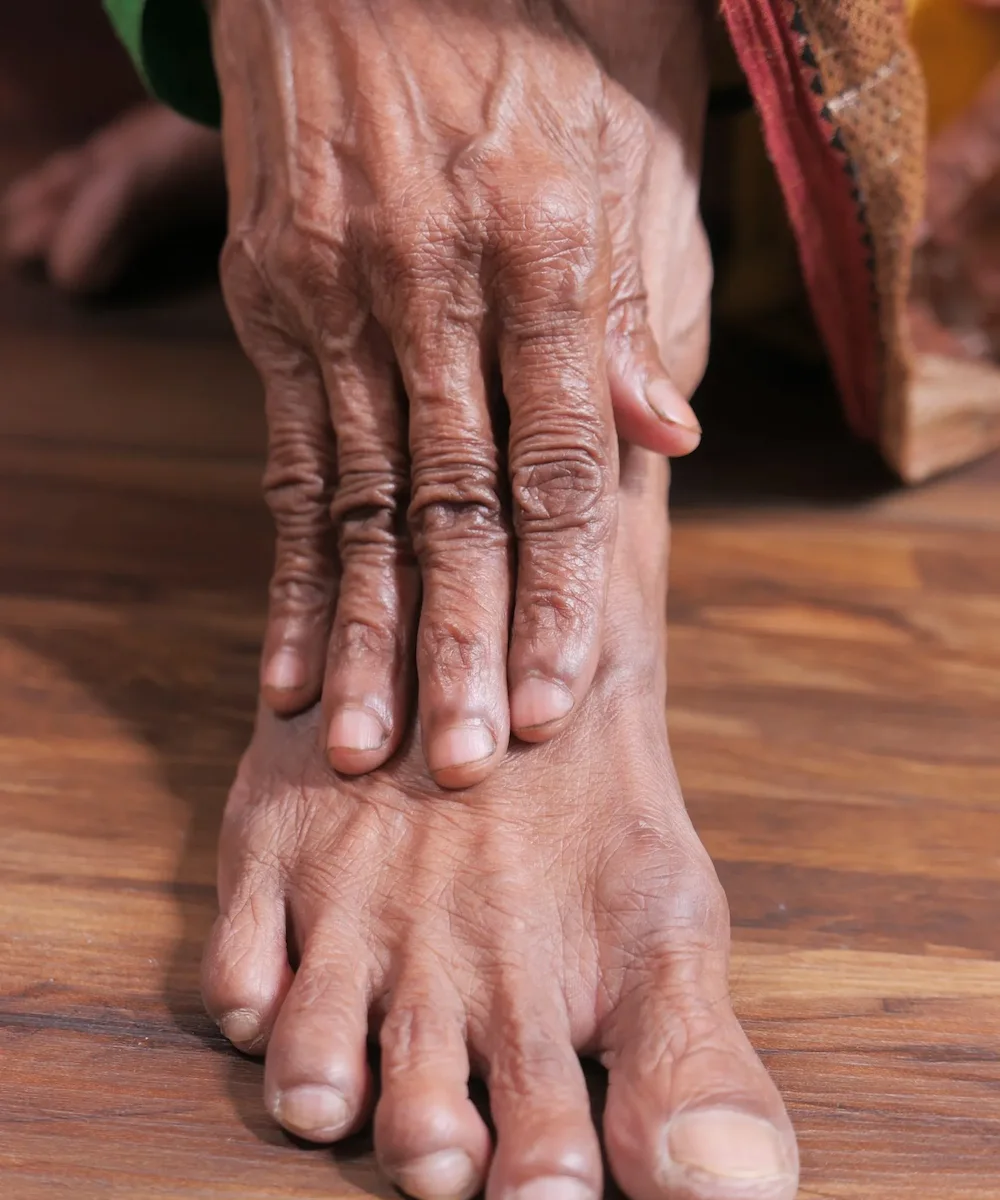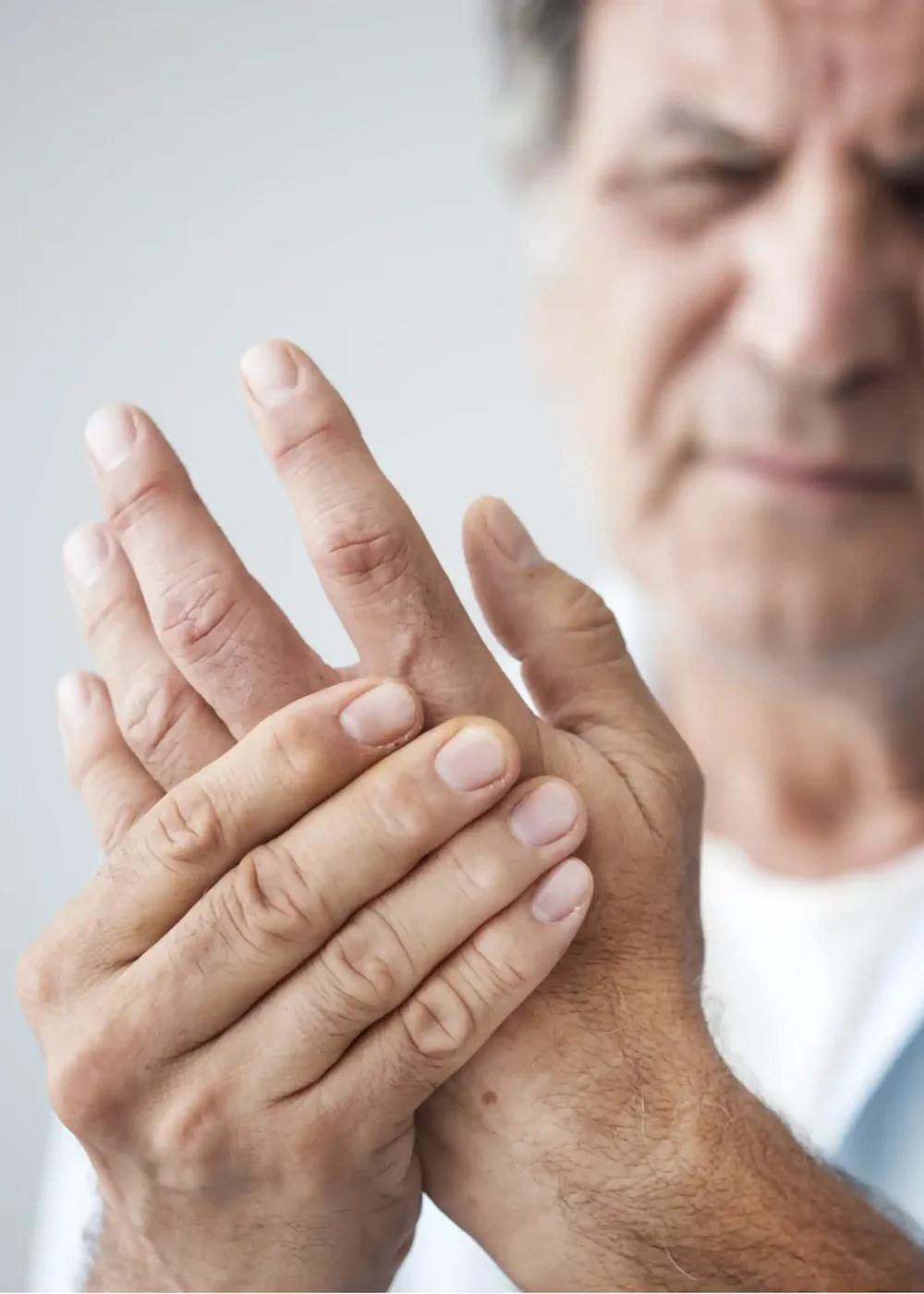Rheumatoid Arthritis Information and Relief in Pasadena, CA
Understanding Rheumatoid Arthritis and Managing Chronic Joint Inflammation
At iSpine in Pasadena, CA, we understand the life-altering effects of rheumatoid arthritis (RA)—a chronic, progressive autoimmune disorder that causes joint pain, stiffness, swelling, and fatigue. Unlike other forms of arthritis that result from wear and tear, RA occurs when the immune system mistakenly attacks the body’s own joint linings, leading to persistent inflammation and potential joint damage.
Understanding rheumatoid arthritis is essential for managing its symptoms and preventing long-term complications. This guide will walk you through the causes, symptoms, progression, and management strategies for RA.

What is Rheumatoid Arthritis?
Rheumatoid arthritis (RA) is a systemic autoimmune disease that primarily targets the synovium—the soft lining of the joints. The immune system mistakenly attacks this lining, causing inflammation, pain, and joint deterioration. Over time, this inflammation can damage cartilage, bone, ligaments, and tendons, leading to joint deformity and loss of function.
Unlike osteoarthritis, which typically affects one side of the body due to wear and tear, RA is symmetrical, meaning it usually affects the same joints on both sides.
Common Causes and Risk Factors for Rheumatoid Arthritis
Causes of Rheumatoid Arthritis
The exact cause of rheumatoid arthritis remains unknown, but it involves a combination of genetic, environmental, and hormonal factors that trigger an abnormal immune response.
- Immune system dysfunction: The immune system mistakenly attacks the synovium, causing chronic inflammation.
- Genetic predisposition: Certain genes (e.g., HLA-DR4) increase the risk.
- Environmental triggers: Infections, smoking, or other environmental factors may activate the disease in genetically susceptible individuals.
- Hormonal factors: Women are more likely to develop RA, suggesting a hormonal link.
Risk Factors
- Age: Most commonly develops between ages 30 and 60.
- Gender: Women are 2-3 times more likely to develop RA than men.
- Family history: Having relatives with RA increases the risk.
- Smoking: Tobacco use increases the likelihood of developing RA and worsens symptoms.
Signs and Symptoms of Rheumatoid Arthritis
Early Signs of RA
- Tender, swollen joints (commonly in the hands, wrists, or feet)
- Morning stiffness lasting longer than 30 minutes
- Fatigue, fever, and weight loss
- Symmetrical joint pain (affecting both sides of the body)
Advanced Symptoms of RA
- Chronic joint inflammation leading to joint deformity
- Reduced range of motion or joint instability
- Nodules (firm lumps under the skin near joints)
- Eye, lung, or heart inflammation in systemic cases
Rheumatoid Arthritis Progression
Stage 1: Early RA
- Mild joint swelling and pain
- Possible fatigue or flu-like symptoms
Stage 2: Moderate RA
- Worsening joint inflammation
- Cartilage damage begins
- Noticeable stiffness and loss of motion
Stage 3: Severe RA
- Cartilage and bone erosion
- Joint deformity and muscle weakness
- Potential organ involvement (lungs, heart)
Stage 4: End-Stage RA
- Extensive joint damage
- Possible joint fusion (ankylosis)
- Significant mobility limitations

Rheumatoid Arthritis vs. Osteoarthritis
|
Feature |
Rheumatoid Arthritis |
Osteoarthritis |
|
Cause |
Autoimmune attack on joint linings |
Wear-and-tear of cartilage |
|
Onset |
Ages 30-60, often earlier |
Older adults (usually 50+) |
|
Joint Involvement |
Symmetrical (both sides of body) |
May affect one or both sides |
|
Symptoms |
Inflammation, swelling, fatigue |
Pain, stiffness after use |
|
Systemic Involvement |
Yes (lungs, heart, eyes) |
No systemic involvement |
Frequently Asked Questions (FAQ) About Rheumatoid Arthritis
Is rheumatoid arthritis curable?
Rheumatoid arthritis has no cure, but early diagnosis and treatment can significantly reduce symptoms, prevent joint damage, and improve quality of life.
How is rheumatoid arthritis diagnosed?
Diagnosis involves a physical exam, medical history review, and tests such as blood tests (e.g., rheumatoid factor, anti-CCP antibodies, ESR, CRP) and imaging studies (X-rays, ultrasound, MRI) to assess joint inflammation and damage.
Can rheumatoid arthritis affect other parts of the body?
Yes, RA is a systemic disease that can affect lungs, heart, eyes, skin, and blood vessels in addition to joints.
What are common treatments for rheumatoid arthritis?
Treatments include disease-modifying antirheumatic drugs (DMARDs), biologic agents, anti-inflammatory medications, physical therapy, exercise, and lifestyle changes to manage symptoms and slow disease progression.
Can lifestyle changes help with rheumatoid arthritis?
Yes, maintaining a healthy weight, regular exercise, balanced nutrition, stress management, and quitting smoking can improve RA symptoms and overall health.
Take Control of Rheumatoid Arthritis Today
If you’re experiencing joint pain, swelling, or other symptoms of rheumatoid arthritis, early intervention is critical to managing the disease and preventing long-term complications. Understanding RA is the first step toward reducing inflammation, preserving joint function, and maintaining quality of life.
Contact iSpine in Pasadena, CA, today to schedule a consultation and learn more about how to manage rheumatoid arthritis effectively.


